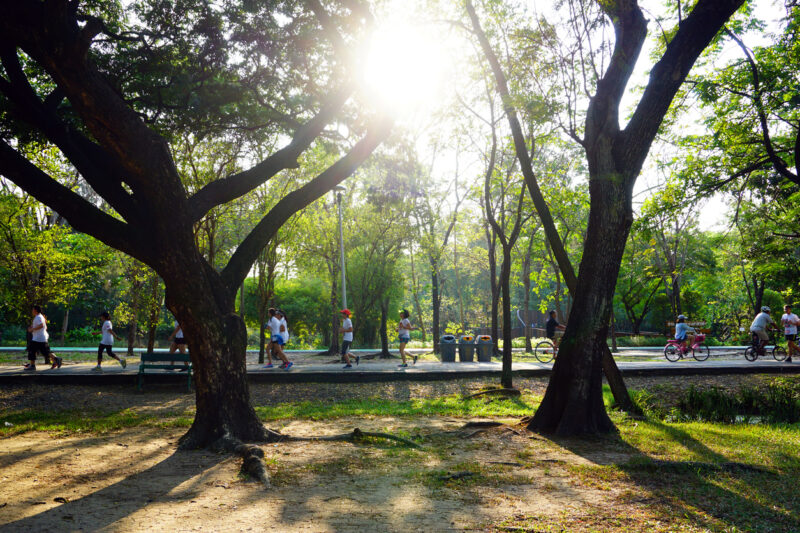Kibbey Wagner | July 23, 2025 | Personal Injury

Halpatiokee Regional Park offers scenic trails and a peaceful escape into nature—but it also comes with risks that every hiker should take seriously. Navigating this expansive, untamed landscape requires more than just enthusiasm.
Before lacing up your boots, it’s important to understand the potential hazards, such as uneven terrain, hidden roots, unpredictable wildlife, and sudden changes in weather. Proper preparation—including the right gear and a clear understanding of trail conditions—can make all the difference.
By staying alert and informed, you can fully enjoy your adventure while ensuring your safety on the trails. Everyone deserves to explore Halpatiokee with confidence and peace of mind.
Hazards Hikers May Face at Halpatiokee Regional Park
While the trails at Halpatiokee Regional Park offer natural beauty, they also present genuine challenges for hikers. Uneven terrain, sharp turns, and slippery spots can lead to accidents—even for seasoned outdoor enthusiasts. Low-hanging branches, thorny vegetation, and jagged rocks can cause scrapes or cuts if you’re not paying close attention.
To stay safe, always remain aware of your surroundings. Pack a well-stocked first aid kit to handle minor injuries, and be sure to check weather forecasts and trail conditions before setting out.
Local authorities regularly issue alerts when storms, flooding, or trail damage create unsafe conditions. Staying updated on these notices helps you avoid unnecessary risks and enjoy a smooth, uninterrupted hike.
Trail Conditions Visitors Should Know
Trail conditions at Halpatiokee Regional Park can vary greatly from one path to another—and often change with the weather. Some trails are well-maintained and easy to navigate, while others wind through dense brush or become obscured by fallen leaves and debris after strong winds. To make the most of your visit, familiarize yourself with the trail layout in advance and choose a route that matches your fitness level and hiking experience.
Park maps highlight key features such as elevation changes, trail distances, and areas with rough or uneven terrain. These resources can help you plan your hike and avoid unexpected obstacles. Wildlife activity may also affect the trails, as animals can leave behind tracks or block narrow passages.
For the most current information, check the park’s website or call the visitor center before heading out. Rangers provide regular updates on trail closures, storm damage, and other potential hazards. With proper planning and respect for the park’s natural conditions, you can enjoy a safer and more rewarding hiking experience.
Wildlife Encounters and How to Stay Safe
Halpatiokee Regional Park is home to a wide variety of wildlife, adding to its natural charm—but also introducing potential risks. Encounters with snakes, wild boars, or other large animals can be dangerous, especially if you startle them by getting too close.
Before your visit, take time to learn about the local wildlife so you’ll know what signs to watch for and how to respond appropriately. Maintaining a respectful distance not only protects you from injury but also reduces stress on the animals and preserves their natural behavior.
To avoid surprises, make your presence known—talking calmly, walking with purpose, and making noise with your steps can alert animals and give them time to move away. Stay alert while hiking, especially in dense brush or near water, and always watch where you step. Some animals nest close to the trail or camouflage easily, so slowing down and staying observant is key to a safe and peaceful hike.
What to Do If You Get Hurt While Hiking
Accidents can happen on the trail, but staying calm and acting quickly can prevent a minor injury from becoming something more serious. First, stop and assess the situation. For cuts, scrapes, or blisters, clean the area thoroughly and cover it with sterile gauze or a bandage from your first aid kit.
More serious injuries—like a sprained ankle, deep laceration, or signs of heat exhaustion—require extra caution. Avoid putting weight on injured limbs, and sit or lie down if you feel lightheaded or in severe pain.
If you have cell service, call for help immediately. If not, use a whistle to signal for assistance or send a companion to locate a park ranger. Be ready to explain what happened, your current location, and the nature of your injury. Prompt communication and knowing when to wait for help are essential for staying safe until rescue arrives.
Legal Options After a Park-Related Injury
An injury at Halpatiokee Park may lead to more than pain. Medical bills, lost income, and stress grow fast. If poor trail care, missing signs, or unsafe paths caused your injury, you may have a legal case.
Speak with a personal injury lawyer right away to see what your legal options are. You may qualify for payment if someone else failed to keep the park safe. Legal help shows you which steps to take, how long you have to file, and what paperwork matters.
Contact Kibbey Wagner Injury & Car Accident Lawyers For Help Today
After a trail injury, you need answers. A meeting with a personal injury lawyer gives you time to tell your story, show your records, and hear your legal options. The attorney explains what to expect. You learn about time limits and how to protect your claim.
For more information, please contact the Stuart, Port St. Lucie, or Palm Beach Gardens personal injury law firm of Kibbey Wagner Injury & Car Accident Lawyers to schedule a free consultation today.
We proudly serve Martin County, St. Lucie County, Palm Beach County, and its surrounding areas in Florida:
Kibbey Wagner Injury & Car Accident Lawyers Stuart
73 SW Flagler Ave
Stuart, FL 34994
(772) 444-7000
Kibbey Wagner Injury & Car Accident Lawyers Port St. Lucie
1100 SW St. Lucie West Blvd. Ste 202
Port St Lucie, FL 34986
(772) 247-3374
Kibbey Wagner Injury & Car Accident Lawyers Palm Beach Gardens
300 Ave of the Champions Ste 170
Palm Beach Gardens, FL 33418
(561) 944-4000
